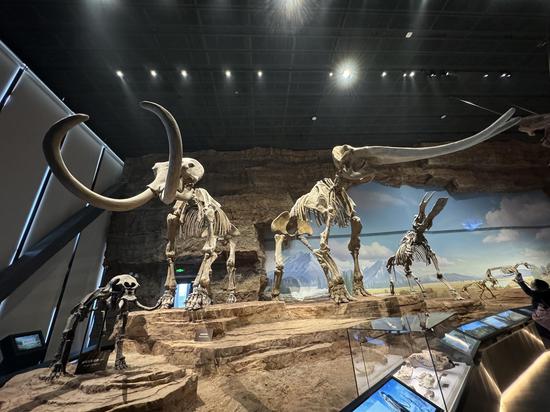
Gigantopithecus blacki (Credit to Garcia Joannes-Boyau, Southern Cross University) (Photo/ Courtesy of Chinese Academy of Sciences)
Chinese, Australian and U.S. researchers have revealed more about the extinction of the Gigantopithecus blacki great ape in their latest joint study, which was published in Nature on Thursday.
The study found that Gigantopithecus blacki became extinct between 295,000 and 215,000 years ago due to being unable to adapt its food preferences and behavior, as well as being vulnerable to the changing climate, the Global Times learned from the Institute of Vertebrate Paleontology and Paleoanthropology (IVPP) and the Chinese Academy of Sciences (CAS).
With a height of about three meters and weight of about 250 kilograms, Gigantopithecus blacki is the largest primate that has ever existed on the Earth. It is a very distant human ancestor.
Gigantopithecus blacki once roamed the karst plains of southern China and became extinct before humans arrived in the region, leaving around 2,000 fossilized teeth and four jawbones among the only signs of their existence.
"The story of Gigantopithecus blacki is an enigma in paleontology - how could such a mighty creature go extinct at a time when other primates were adapting and surviving? The unresolved cause of its disappearance has become a mystery in the field," said Zhang Yingqi, a Chinese paleontologist from the IVPP and co-lead author of the study.
According to Zhang, the IVPP has been excavating for Gigantopithecus blacki remains in southern China for more than 10 years, but could figure out the cause of its extinction through consistent environmental analysis.
Definitive evidence revealing the story of the giant ape's extinction came from a large-scale evidence collecting project on 22 cave sites spread across a wide region of South China's Guangxi Zhuang Autonomous Region.
"It's a major challenge to present a defined cause for the extinction of a species. At first, we should figure out the exact time when a species disappears from the fossil record so that we can conduct an environmental reconstruction and behavior assessment," said Kira Westaway, a geochronologist associate professor from Macquarie University who is another co-lead author of the study. "Without robust dating, you are simply looking for clues in the wrong places," Westaway said.
Six different dating techniques were applied to analyze the cave sediments and fossils. Luminescence dating, which measures a light-sensitive signal found in the burial sediments that encased the Gigantopithecus blacki fossils, was the primary technique, supported by uranium series (U.S.) and electron-spin resonance (U.S.-ESR) dating of the Gigantopithecus blacki teeth themselves.
By direct-dating the fossil remains, the scientists confirmed the fossils' age aligns with the luminescence sequence in the sediments where they were found, providing a comprehensive and reliable chronology for the extinction of Gigantopithecus blacki.
Using detailed pollen analysis, fauna reconstructions, stable isotope analysis of the teeth and a detailed analysis of the cave sediments at a micro level, the team established the environmental conditions when Gigantopithecus blacki went extinct. Then, using trace element and dental microwear mark textural analysis (DMTA) of the ape's teeth, the team built a comparison model between when it was flourishing and when it was close to extinction.
According to scientists, tooth tissue contains rich information related to species' feeding behavior that can be used to interpret in depth whether they are facing survival pressure, the diversity of their food, the regularity of their feeding behavior and their activity range.
The findings show Gigantopithecus blacki went extinct between 295,000 and 215,000 years ago, much earlier than previously assumed.
Before that time, Gigantopithecus blacki flourished in a rich and diverse forest environment. However, by 700,000 to 600,000 years ago, the increased seasonality in the forest led to diversification of the environment and change in the structure of the forest communities.
Orangutans (genus Pongo) - a close relative of Gigantopithecus blacki - adapted in size, behavior and habitat preferences as conditions changed. However, Gigantopithecus blacki relied on a less nutritious food source when its preferences were unavailable. At the same time, they grew larger and bulkier, and their geographical range for feeding was greatly reduced. Therefore, its population faced long-term survival pressure and continued to shrink, eventually becoming extinct.
It was Gigantopithecus blacki's stubbornness and conservatism that led to its demise, Zhang noted.
As the specter of a sixth mass extinction looms over us, we urgently need to understand why species become extinct. As with the story of the extinction of Gigantopithecus blacki, exploring unresolved extinction events in the past will help us to understand the resilience of primates and the fate of other large animals in the past and into the future, Westaway noted.


















































 京公网安备 11010202009201号
京公网安备 11010202009201号